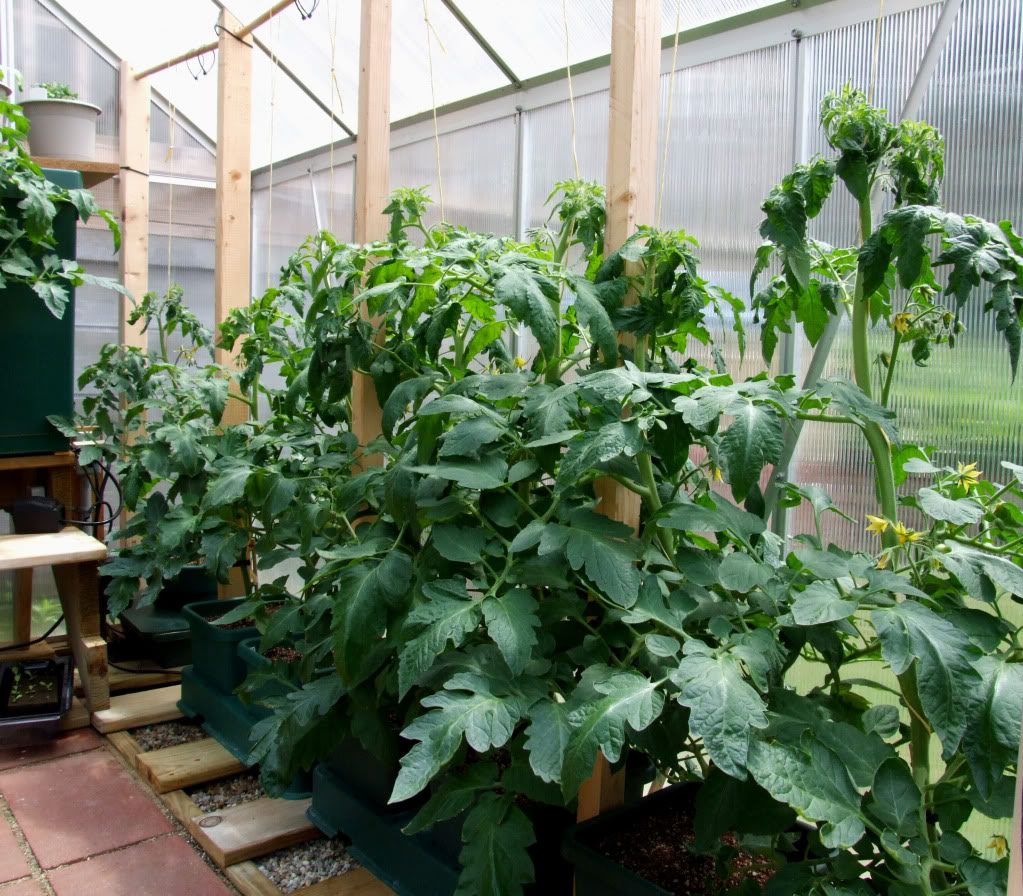 A lot of articles have already been written about the fatliquoring of tomatoes, and yet there is a need to once again touch upon this topic. Vegetable growers with no experience often face this problem when growing tomatoes.
A lot of articles have already been written about the fatliquoring of tomatoes, and yet there is a need to once again touch upon this topic. Vegetable growers with no experience often face this problem when growing tomatoes.
Plants suddenly begin to grow vegetative mass unlimitedly, scattering their powerful leaves in all directions, not at all in a hurry to tie the fruits. On greasing bushes, flower brushes are laid very slowly; there are few flowers on them that do not differ in viability. With such a development of events, it is easy to remain without a crop at all or it will not meet expectations.
Content
Description of the fatliquoring process
This phenomenon on tomatoes is most often characteristic of growing a crop in a protected ground. At the same time, the plants look completely healthy, but stop in development. Their leaves become large and dense, often curled. The stems and leaf apparatus are painted in intensely green color.
Unlike leaves, flower brushes look flawed. The number of flowers on them is minimal and of them the fruits are not always tied.
Experts call the term “fatliquoring” the phenomenon of the abnormal development of tomatoes, which is manifested by the following symptoms:
- rapid growth of leaves and stems;
- the formation of a large number of stepsons;
- the formation of a super strong root system;
- stalks of tomatoes are much thicker than usual sizes;
- leaves change their traditional color to intensely green;
- outgrowth of a flower brush;
- lack of fruits or their delayed formation;
- the appearance of twisted leaves at the top of the plant.
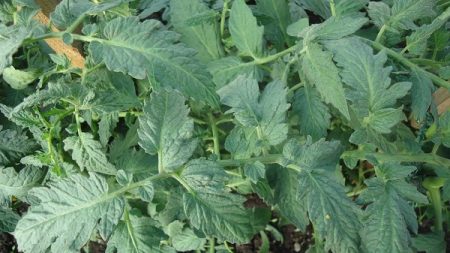
Fatliquoring is a direct consequence of the excessive use of fertilizers and violation of the irrigation regime.
You can’t expect any tangible benefits from fattening tomatoes, but there are plenty of minuses for this phenomenon:
- expensive seeds, fertilizers and chemicals are spent on cultivation;
- they uselessly occupy a place in the greenhouse and in the garden bed;
- time is wasted in caring for them;
- the crop is absent or insignificant;
- the quality of the fruit is below normal;
- cash costs do not pay off with the crop.
The reasons for the fatliquoring of tomatoes
All changes that occur with tomatoes during the growing season always have some reason. This also applies to fatliquoring. It is worth noting that indeterminate varieties of tomatoes, which have long stems with many shoots, are prone to excessive buildup of excess green mass. They are usually grown in greenhouses, where they are subjected to artificial formation.
Determinant forms are not so demanding on the formation, because their bush has a limited height. They direct most of their nutrition to setting and pouring fruits, and not to increase vegetative mass. Low stems of determinant tomatoes do not interfere with the evaporation of moisture from the soil, therefore, they are fattened less often.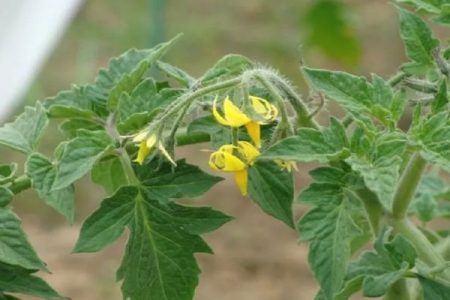
Too much fertilizer
This is one of the main reasons for the rapid growth of stepchildren and poor fruit setting.It occurs due to an overdose of fertilizers in the soil, such as:
- humus;
- compost;
- mineral fertilizers containing nitrogen.
Moreover, both root and foliar top dressing with organic and mineral products containing nitrogen can cause fatliquoring. The use of nutrient solutions of high concentration also contributes to the appearance of fatliquoring. Plants fed with nitrogen direct all nutrition to the growth and development of shoots, leaves and roots, while buds, flowers and ovaries remain on a starvation diet.
High humidity
The microclimate that tomatoes have during the growing season can also cause fatliquoring. Tomatoes develop normally at a relative humidity of 65-75 percent. When air humidity exceeds the established limits, conditions are created for the occurrence of fatliquoring.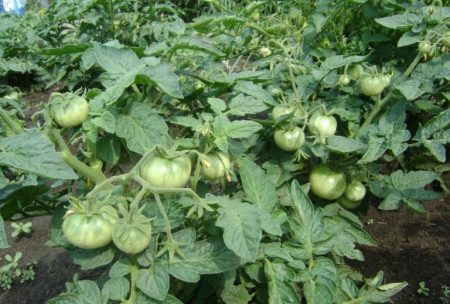
High soil moisture inhibits the formation of strong roots, which negatively affects immunity. Tomatoes can suffer from late blight and other fungal diseases.
Lack of light
Tomatoes require a certain level of lighting for normal growth and fruiting. With a lack of light, fatliquoring can be observed in tomatoes. Plants can receive less light for a number of reasons:
- Errors in choosing a place for the construction of a greenhouse or garden beds in the garden;
- planting tomatoes without taking into account the recommended schemes;
- neglect of the formation of bushes;
- a large number of cloudy days per year;
- lack of artificial illumination of tomatoes.
High fit
Planting tomatoes in excessively densified patterns impedes the movement of air in the root zone, which leads to an increase in air humidity. This creates excellent conditions for the emergence of fatliquoring of tomatoes. This is especially true for indeterminate forms of tomatoes, the bushes of which are very tall and obscure each other.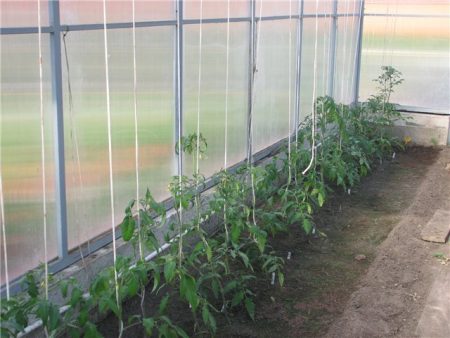
Not optimal temperature
It was found that low positive temperatures often lead to fatliquoring of tomatoes. But the temperature, in excess of the optimum values for tomatoes, can cause the phenomenon of fatliquoring. To prevent this undesirable phenomenon, it is important to maintain the optimum temperature for tomatoes not only during the day, but also at night. It will be normal if in your greenhouse during the day the temperature is maintained at 22 - 26 degrees above zero, and at night 5-7 degrees less.
Tomato Fat Loss Prevention
We can talk about preventing the fatliquoring of tomatoes if they are already fattening and effective measures should be taken to eliminate it. This also applies to tomatoes, normally developed, when we want to apply a number of preventive measures to prevent possible fat loss. For the first and second cases, effective measures have been developed.
The fight against fat loss
Faced with the fatliquoring of tomatoes at your own site, you must immediately fight this phenomenon by carrying out the measures indicated below.
Topping
If a lot of shoots grow on the flower brush, then you need to pinch the upper brush, leaving 3-4 well-developed ovaries. There will be not very many fruits, but they will have time to ripen in time and will not fall during the growing season.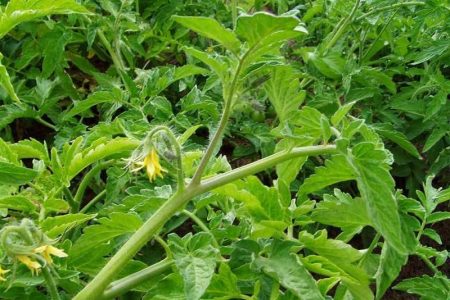
Suspension of watering
This is the first action that you should resort to when fattening tomatoes. Tomatoes growing in a greenhouse and garden bed stop watering for a week.
Leaf removal
Suspending watering, it is necessary at the same time to begin to cut part of the extra leaves that interfere with the normal illumination of plants. Without fail, cut off leaves, shading flower brushes and pouring ovaries. In order to avoid plant stress, it is recommended to remove no more than 2 leaves from one plant in 1 pass.
Air temperature regulation
If greenhouse tomatoes are fattening due to low air temperature, you should close the greenhouse and stop airing. And in very hot weather, it is recommended to keep the ventilation transoms open in the greenhouse.
Feeding with phosphate fertilizers
To perform this work, you must first prepare an extract from superphosphate according to the following recipe:
- take a bucket and pour 400 g of superphosphate into it;
- pour fertilizer with 3 liters of boiling water;
- set the bucket in a warm secluded place;
- mix the composition from time to time;
- readiness of the drug occurs after a day.
Before use, the concentrate is diluted with water, at the rate of 150 ml per bucket of water. If desired, a little ash can be added to the composition.
Nitrogen Fertilizer Ban
On tomatoes subject to fatliquoring, it is forbidden to apply nitrogen fertilizers of any form and by all methods.
Manual pollination
For better fruit setting, manual pollination is recommended twice a day. It is carried out by shaking the bushes, and in greenhouse conditions for better pollination, tap with a stick on horizontal wire trellises. Instead of performing these steps, you can install a beehive in a greenhouse or in a country house and provide the job of pollinating tomato flowers with beneficial insects.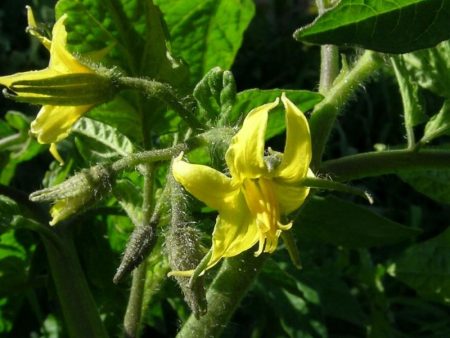
Having completed the above steps, you can count on the correction of the existing negative situation.
Fat loss prevention
The culprit of the growth of tomato bushes are usually nitrogen fertilizers and heavily manicured soil. Given this and other points noted below, this undesirable process can be avoided.
The right choice of variety
You can protect your tomatoes from fatliquoring by planting a determinant tomato variety with a shortened flower brush. Such tomatoes are extremely rare.
Bush formation
Correct and timely formation of plants with the removal of extra stepsons and leaves, especially on indeterminate tomatoes, is also a preventive measure against fatliquoring.
Landing pattern
When planting tomato seedlings in a permanent place, you should strictly adhere to the recommended planting scheme. Otherwise, the planting density will be higher than optimal, there will be problems with ventilation of the bushes and, as a result, there will be increased humidity, which will also lead to fat loss.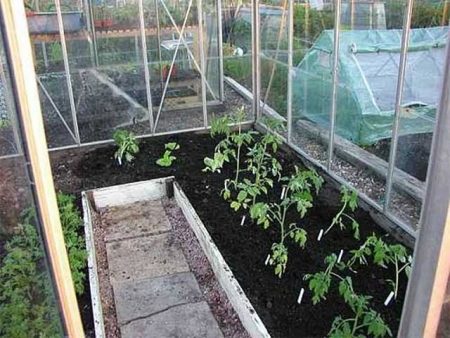
Fertilizer system
You should carefully consider the time and methods of fertilizing under the crop. It is necessary to suspend the fertilizing of tomato bushes with nitrogen-containing fertilizers in time, to prevent excess doses of nitrogen fertilizers when feeding. Apply infusion of ash for top dressing.
Flowering stimulation
The flowering process can be stimulated with yeast, fly ash or boric acid. For the same purpose, you can use special stimulants such as Zircon, manufactured by the industry.
Watering mode
It is also important to observe the irrigation regime on tomatoes to avoid fatliquoring. Tomatoes should be watered no more than 2 times a week, and when they enter the flowering phase, they need to be watered even less often. It is even better to equip drip irrigation, and mulch the soil surface. In this case, the optimum moisture regime will be achieved for both soil and air.
Creature comfortable conditions
For this purpose, for the tomatoes in the garden, they select a site that receives a lot of light. It should be blown a little by the wind. And in the greenhouse you need to equip the ventilation system.
Reviews gardeners
Numerous reviews of vegetable growers indicate that the fatliquoring of tomatoes can be fought and achieved, while achieving the desired result.Timely entry into the fight, the implementation of preventive measures may well help prevent the process and get a decent harvest of vitamin products.
Savely, 44 years old:
“I want to talk about the methods I use for the fatliquoring of tomato bushes. They are not difficult and can be applied in any regions. In tomato beds, potassium monophosphate. I fertilize under the root, and also spray on the leaves. If there are a lot of leaves on the bush, I cut off part of them. The soil on the site is black earth, so in spring I don’t use organic matter. Excess nitrogen from the soil can be removed with the help of mulch from sawdust, which I pour in the spring, and in the autumn I dig the soil. "
Larisa, 38 years old:
“Last year, my tomatoes raged and began to fatten. Zhirovanie reached such an extent that it was difficult to figure out where tomatoes have trunks and where stepsons. An experienced neighbor advised to dilute superphosphate and feed under the root. I did just that, fed the bushes 2 times in 2 weeks. In addition, I cut off the extra leaves so that they would not obscure the flower brushes and poured fruits. The bushes recovered and took on a normal appearance. Harvesting tomatoes was also normal. "
Mikhail, 49 years old
“I want to share my personal experience in preventing the fatliquoring of tomatoes. As soon as I begin to notice that the tomatoes in my summer cottage go on to wild growth, I create an artificial stressful environment for them. Dramatically reduce the amount of watering. Once in unfavorable conditions of growth, the plants make attempts associated with procreation. They lay flower brushes again and form fruits. Simultaneously with the reduction of watering, in three passes I removed 3 large old leaves. These actions helped me get a good harvest. ”
In order not to have crop losses due to the fatliquoring of tomatoes, one must study the experience of others and put into practice all the recommendations. Choose cultivars that are not prone to fatliquoring, for example, those that have a short brush or any variety that is related to determinants. During the growth period of tomatoes, create the required conditions for them, and you will get the expected harvest.




 Low-growing tomatoes, without pinching: 5 of the most delicious varieties
Low-growing tomatoes, without pinching: 5 of the most delicious varieties Why tomato seedlings grow poorly
Why tomato seedlings grow poorly We grow a tomato in a shell
We grow a tomato in a shell Growing tomatoes without watering according to the method of Kazarin
Growing tomatoes without watering according to the method of Kazarin